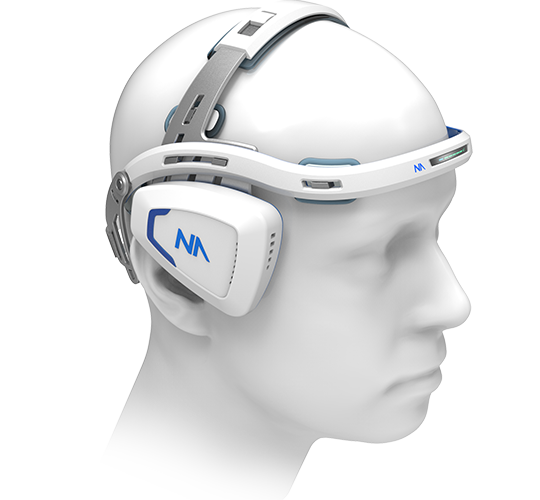

Breath holding induces and increase in CO2, which in turn results in cerebral vasodilation. Identification of exhausted VMR can be a good indication for high risk for stroke. The Breath Holding (BH) test is a specific test for evaluation of Vasomotor Reactivity (VMR) and cerebral autoregulatory capacity. The respective parameters are automatically shown in a dedicated table with the VMR index readily displayed. Doppler waveforms are captured automatically during baseline, and peak (hypercapnia) and minimal (hypocapnia) flows for immediate evaluation, as well as a display of the blood flow fluctuations during entire test process. The Viasonix Dolphin is ideally set with dedicated Unilateral and Bilateral protocols to determine the autoregulatory capacity of the cerebral circulation of the patient. Absence of flow increase reflects a complete exhaustion of the autoregulatory capacity. Typically, an increase in peak velocities above 40% during induced increase in CO2 reflects intact VMR, whereas a smaller increase reflects different degrees of impaired VMR. Note that the Diamox test is not accepted in some countries. VMR can be assessed with TCD under two specific conditions: hypercapnia or CO2 reactivity, and with intravenous injections of Acetazolamide or the Diamox test.

Vasomotor reactivity (VMR) and autoregulation define the physiological compensatory mechanisms when flow is impaired. All data is saved both in the time domain and at all depths along the ultrasound beam, which allows the examiner to review the data after freeze to explore the measured blood flow velocities. The Dolphin also provides an ideal platform for the identification of the critical highest intracranial velocities. In addition, an immediate velocity trend analysis is provided in order to help identify the critical time whereby intracranial velocities are dramatically increased, and immediate clinical intervention is required. The Viasonix Dolphin system provides a dedicated vasospasm protocol that allows setting velocity thresholds for immediate identification of the severity of the vasospasm condition. Typically, vasospasm is a developing pathology, and requires day by day monitoring of blood flow velocity values. Additionally, velocities in the middle cerebral artery can be compared to internal carotid artery velocities, and the resulting ratio (Lindergaard index) can indicate cerebral vasospasm when it is greater than 3. Severe vasospasm is defined in various international guidelines, and typically when mean velocities exceed 200 cm/sec, moderate conditions are with mean velocities between 120-200 cm/sec, and mild vasospasm is for mean velocities near 120 cm/sec. Vasospasm is characterized by increased velocities due to arterial narrowing. TCD is rather specific for this condition, and allows non-invasive, continuous bed-side monitoring. Early detection of vasospasm is critical since it allows timely intervention. Cerebral Vasospasm is typically the outcome of Subarachnoid Hemorrhage (SAH) as a result of an aneurysm rupture.


 0 kommentar(er)
0 kommentar(er)
